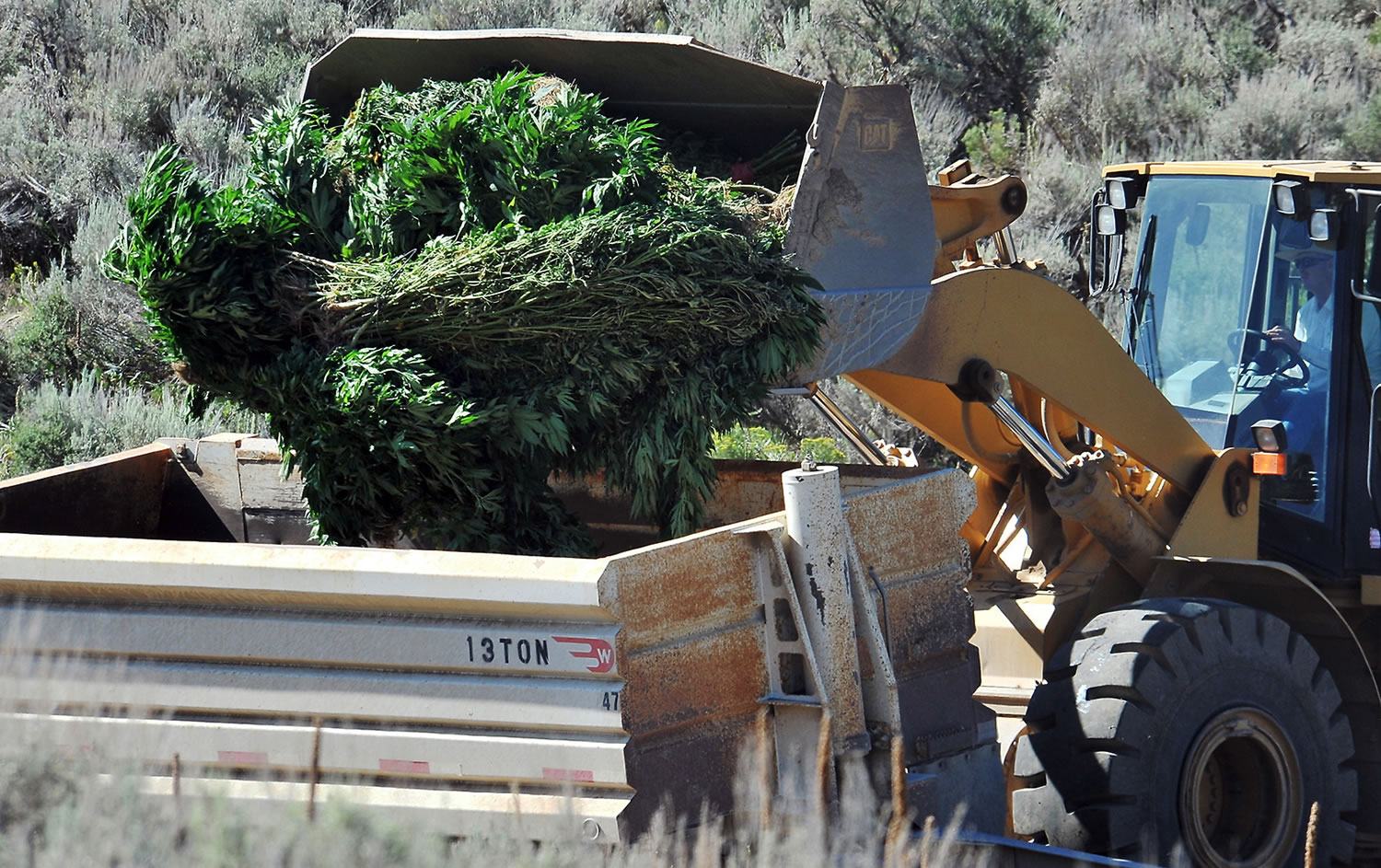SEATTLE — Federal data show the number of live marijuana plants eradicated in outdoor and indoor grow operations has dropped in most states over the past two years, while the amount of bulk processed marijuana seized has doubled.
And authorities can’t pinpoint exact reasons.
One thing is known: California, which provides the lion’s share of the millions of plants eradicated every year in the United States, saw a 46.5 percent drop from 2010 to 2011, bringing down the nation’s overall numbers.
“You can’t attribute it to one factor,” said Casey Rettig, spokeswoman for Drug Enforcement Administration in San Francisco.
Shifts in growers’ tactics, weather patterns and budget cuts to local and state enforcement agencies have played roles in decreasing eradication, DEA and local officials said.
In 2010, authorities seized 10.32 million marijuana plants from outdoor and indoor growing operations, according to DEA data. By 2011, that number had dropped to 6.7 million plants — a 35 percent decrease.
In California, 7.3 million plants were eradicated in 2010, 3.9 million in 2011.
But it’s not all California. In that same year, 37 states saw their eradication results drop. Data for 2012 are not yet available.
One of the most dramatic shifts came in Idaho, which saw its eradication results shrink by nearly 99 percent between 2009 and 2011 — from 77,748 plants to just 786. This week, however, the Caribou County sheriff’s office reported raiding a farm in southeast Idaho with 40,000 plants.
In order for a marijuana plant to be counted, it has to have a root structure, even if the plant is just inches tall, and be mature enough to yield the buds that contain the drug, said Doug James, DEA spokesman for the Washington, Oregon, Idaho and Alaska region.
Final product
But while the number of plants eradicated has dropped, the number of pounds of bulk processed marijuana confiscated has increased from 53,843 pounds in 2009 to 113,167 pounds in 2011, the DEA data show.
Some of this was seized along with eradications at growing locations. But DEA officials said the data also include marijuana seized during traffic stops and other operations, and it’s hard to pinpoint where marijuana comes from.
“You can’t necessarily measure what’s out there,” Rettig said.
Teams of local, state and federal authorities have focused for years on finding clandestine marijuana growing operations in forests and wild lands around the country, using helicopters to search for plants hidden beneath the natural canopy.
These marijuana grow operations, authorities have said, feature irrigation systems from nearby creeks and fertilizers that damage the local habitat. Authorities believe some of the growing operations are operated by branches of Mexican drug organizations using the forced labor of immigrants to tend the plants. Others are tended by locals.
“On a professional level, I like to believe that we’re pushing them out of the area,” said Washington state Patrol Lt. Mark Brogan, who is in charge of narcotics investigations. Washington saw its number of plants eradicated dip from over 600,000 to just over 325,000 between 2009 and 2011.
But Brogan said lingering cool spring weather has also affected the crop over the past couple of years.
“They’re growing in areas where they need very good conditions to cultivate a lot of plants,” he said.
Farms move, split up
In California, Rettig said growers are switching from large-scale forest farms with many plants to smaller, less visible plots where they can grow fewer, but bigger and higher-yielding plants.
There has been a change in where these plots are grown, too, with many operations moving to the agricultural region of the Central Valley, Rettig added.
“Most of the smart people moved down … and a lot of them decentralized their gardens where it’s less likely to be seen and eradicated,” said Dale Gieringer of the California chapter of National Organization for the Reform of Marijuana Laws, which advocates for legalization of marijuana.
Gieringer said street prices for marijuana have dipped recently, which suggests that there is plenty of it to go around, despite the DEA’s efforts.
“I would argue that, in large part, many of these formerly outdoor grows have moved indoors,” said Paul Armentano, deputy director of NORML. That marijuana “commands a higher price in the market. There seems to be greater preference for indoor-grown versus outdoor-grown. It could be simple market forces at work.”
Budget cuts to California’s Campaign Against Marijuana Planting are also a factor, Rettig said.
Recently, articles in the magazine GQ and the online magazine Daily Beast suggested that the Obama Administration is changing its priorities on marijuana enforcement. The Daily Beast pointed to cuts to the National Guard program that provides helicopters for marijuana searches.
Rettig said the DEA’s priorities have not changed, and that they do not expect budget cuts.



